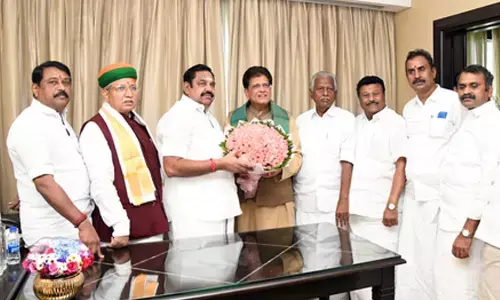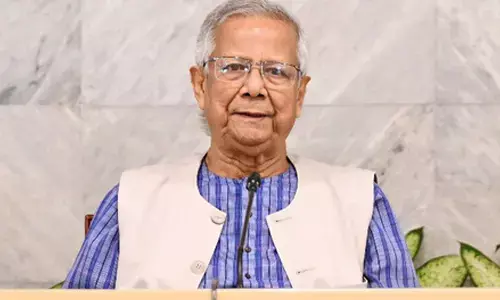MyVoice: Views of our readers 22nd February 2021

MyVoice
The ongoing farmers’ protests in Delhi have succeeded in denting the image of the ruling BJP and have provided a fortuitous opening to the Opposition parties
Farmers' stir should revitalise Cong
The ongoing farmers' protests in Delhi have succeeded in denting the image of the rulingBJPand have provided a fortuitous opening to the Opposition parties. They can capitalise on the protests in two ways. Firstly, it can help them in ideologically repositioning themselves in opposition to the BJP. The "Adani Ambani government" against the pious poor farmer is a potent political narrative. The caste-based parties in the Hindi heartland had started running out of steam even before the rise of the BJP.
This political moment can enable them to recalibrate their political mobilizational strategies from caste to class, thus increasing their catchment area to a wider array of castes. This is particularly important in Uttar Pradesh, where the numerically strong but scattered Most Backward Castes have drifted rapidly towards the BJP. The protests have already given the impetus to the Congress, which is often charged with lacking ideological clarity, into adopting a shaper left populist rhetoric.
Rahul Gandhi has situated the farmer protests in a larger anti-capitalist narrative, repeatedly stating that the government cares for their friends "Ambani and Adani" more than the ordinary people of the country. Unlike the Rafale issue, which dealt with the remote issue of French aircrafts, the farmer protests present an emotionally powerful political canvas on which to paint his populist attacks on crony capitalism.
Secondly, the present moment can provide Opposition parties with the necessary push to refurbish their organisational resources. Indian political parties are known to be organisationally weak, and reliant on local elites to act as a bridge between them and the public. This weakness has been made painfully apparent in recent years, where opposition organisational inactivity and ruling party hyper-visibility has reinforced the impression of the hegemonic irresistibility of the BJP. A more proactive engagement with the farmers movement, such as holding rallies and public events in solidarity, with recharge the dormant workers of opposition parties, and activate party structures at all levels. It is perhaps with this objective in mind that the Congress has planned to hold padyatras in every district this month.
Ravi Kumar B, Hyderabad
Some PSUs should be retained
This is with reference to your report 'Back private sector to make India self-reliant' (Feb 21). The big-ticket revenues in the next fiscal are expected to come from sale of the loss-making Air India and the profit-making Bharat Petroleum Corporation Limited (BPCL). The Air India sale was derailed last year as there were literally no bids for the airline. The company's huge debt overhang was taken out of the picture and other incentives were added, leading to a possibility that it could be acquired by the Tatas.
Which would be in the fitness of things, given that the airline's founder was JRD Tata. As for BPCL, it has many suitors owing to its critical role in the country's oil refining and marketing sector. Apart from these larger ventures, the Department of Investment and Public Asset Management (DIPAM) as the Disinvestment Ministry is now euphemistically called, has identified an entire pipeline of about two dozen public enterprises that could be privatised over the next one to two years.
For the long term, however, a more detailed policy on privatisation plans is available. It envisages that barring four strategic areas, divestment will gradually be carried out in all others. The selected areas are atomic energy, space and defence; transport and telecommunications; power, petroleum, coal and other minerals; and banking, insurance and financial services. Even in these sectors, a minimal number of public enterprises should be retained with government equity participation.
Sai Lakshmi Rao, Guntur, AP















